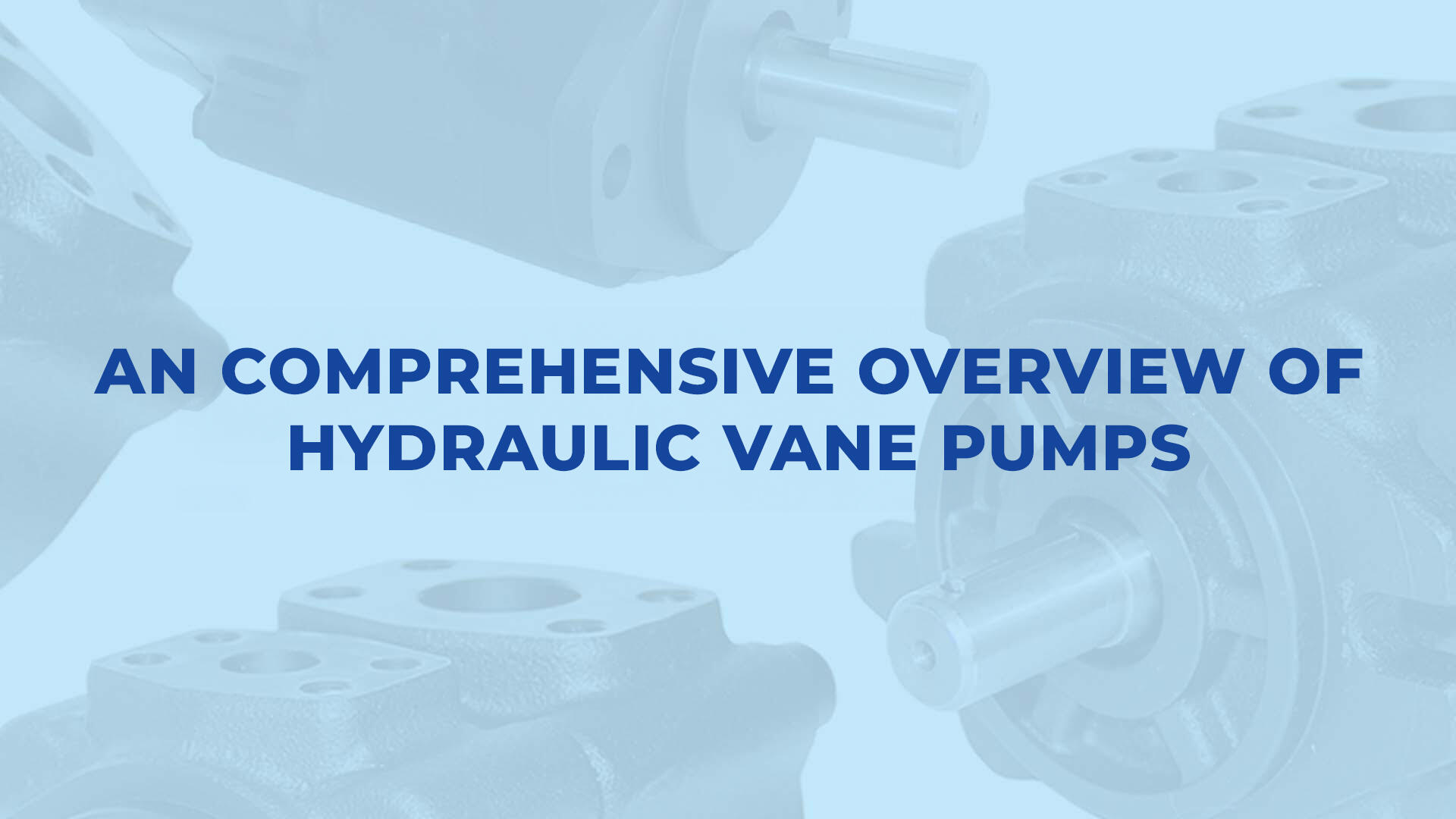-
An Comprehensive Overview of Hydraulic Vane Pumps.

Hydraulic vane pumps, belonging to the category of positive displacement pumps, provide multiple benefits. These pumps operate with relatively low noise levels and demonstrate higher tolerance for various fluid types and viscosities compared to Gear and Piston pumps. Their versatility and efficiency make them valuable components in hydraulic systems, ensuring seamless fluid handling and power transmission.
What is a Hydraulic Pump?
Hydraulic pumps are essential components of hydraulic systems that facilitate the movement of hydraulic fluid, generating hydraulic power. Sometimes, they are mistakenly referred to as “hydraulic” pumps. In the realm of hydraulics, they play a vital role in power transmission, controlling the energy carried by moving fluids under pressure and converting it into mechanical energy. Various types of pumps used to transmit hydraulic fluids may also fall under the category of hydraulic pumps. Given the wide range of applications for hydraulic systems, they hold significant importance in diverse commercial, industrial, and consumer sectors.
“Power transmission” encompasses the complete process of converting energy into a practical form for various applications. Within the power transmission field, there are three main branches: mechanical power, electrical power, and fluid power. Fluid power encompasses the utilisation of moving gases and fluids to transmit power. Hydraulics, a subcategory of fluid power, focuses on the use of fluids rather than gases. The other field within fluid power is known as pneumatics, which deals with the storage and release of energy using compressed gas.
Functions of a Vane Pump
Hydraulic vane pumps are available in three main types:
- Unbalanced fixed displacement vane pump.
- Balanced fixed displacement vane pump.
- Variable displacement vane pump.
The first type features an off-center rotor situated within a circular ring. As the rotor turns, centrifugal force urges the vanes towards the inside of the external circular ring. The vanes create chambers between themselves, the rotor, and the inside of the circular ring. These chambers expand with fluid as the rotor turns and then reduce, discharging the fluid.
Balanced fixed displacement vane pumps operate similarly, but within an elliptical ring, featuring two points of inlet and two points of outlet. The two pressure outlets maintain balance, preventing the side force on the shaft experienced with the unbalanced type. On the other hand, the variable displacement vane pump functions like the unbalanced fixed type, but its outer ring is adjustable using a robust spring, allowing for an increase or decrease in the maximum flow produced.
Advantages of Vane Pumps
Vane pumps offer various benefits, such as:
- Reduced pressure pulsation, resulting in a smoother and more continuous flow compared to standard gear and piston pumps.
- Greater tolerance to contamination than gear or piston pumps.
- Relatively low noise levels compared to standard gear and piston pumps.
Considerations for Selecting Hydraulic Pumps
When choosing hydraulic pumps, it’s essential to integrate them into a broader power transmission strategy, combining various types of power transmission, such as hydraulic, pneumatic, mechanical, and electrical. Trusted hydraulic manufacturers/suppliers can assist in developing and implementing an effective hydraulic strategy for specific commercial applications.
Selecting the right type of hydraulic pump depends on its intended use and flexibility. The material composition of the pump, including cylinders, pistons, and gears, must withstand wear and hydraulic fluids.
Manufacturers must ensure that hydraulic pump specifications align with intended usage, considering factors like operating pressure, horsepower, fluid flow, and more. Recognize inefficiencies within hydraulic drive systems to optimize performance.
Hydraulic pumps initiate the hydraulic procedure, displacing liquid volume from the reservoir to actuators, typically powered by an internal combustion system.
Why Opt for Shriank’s Hydraulic Pumps?
When it comes to hydraulic pumps, Shriank’s Hydraulic Pumps stand out as a reliable and innovative choice. With a proven track record of excellence, Shriank’s Hydraulic Pumps offers a wide range of high-quality hydraulic pumps that cater to diverse industrial needs. Their pumps are crafted with durable materials to withstand continuous wear and tear, ensuring long-lasting performance. Additionally, Shriank’s Hydraulic Pumps’ commitment to efficiency and precision makes them an ideal partner for developing and implementing a tailored hydraulic strategy.
Whether for lifts, cranes, or heavy machinery, their pumps meet strict operating specifications, providing reliable power transmission solutions. Opt for Shriank’s Hydraulic Pumps and experience the utmost performance and reliability in hydraulic systems.
Take Away
In conclusion, selecting the right hydraulic pump is a critical aspect of ensuring efficient power transmission within hydraulic systems. By integrating hydraulic pumps into a comprehensive power transmission strategy that includes various types of power transmission, businesses can enhance performance and productivity across a wide range of professional applications. Careful consideration of pump capabilities, material composition, and overall system efficiency is vital in achieving optimal results.
India's Largest Hydraulic Vane Pump Supplier
contact us: +91 98989 09148
Delivery
Prompt and accurate delivery
Client Servicing
Pro after-sales customer support
Quality assurance
Top quality standards
Export
More then 10 countries
